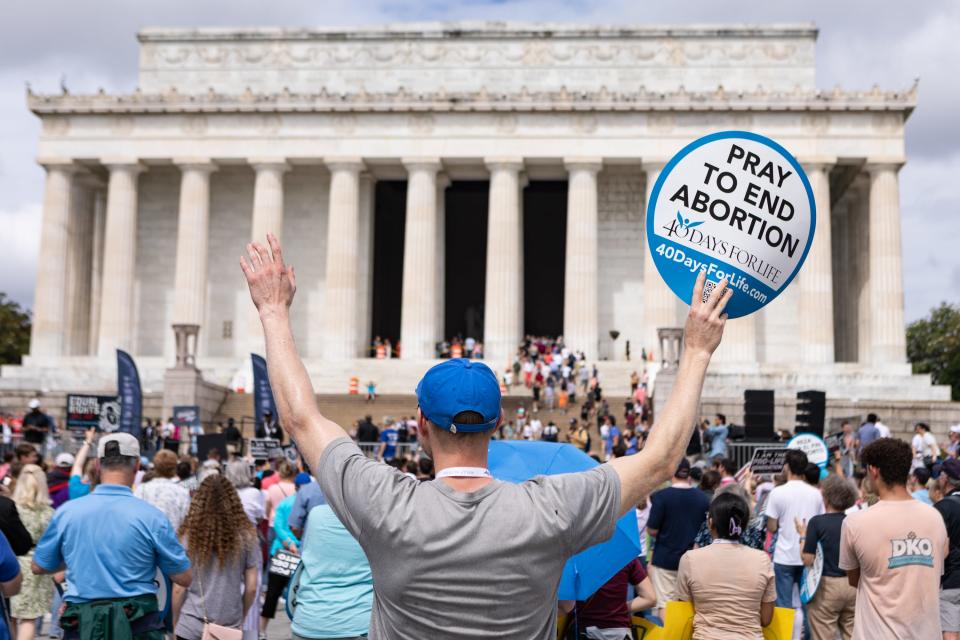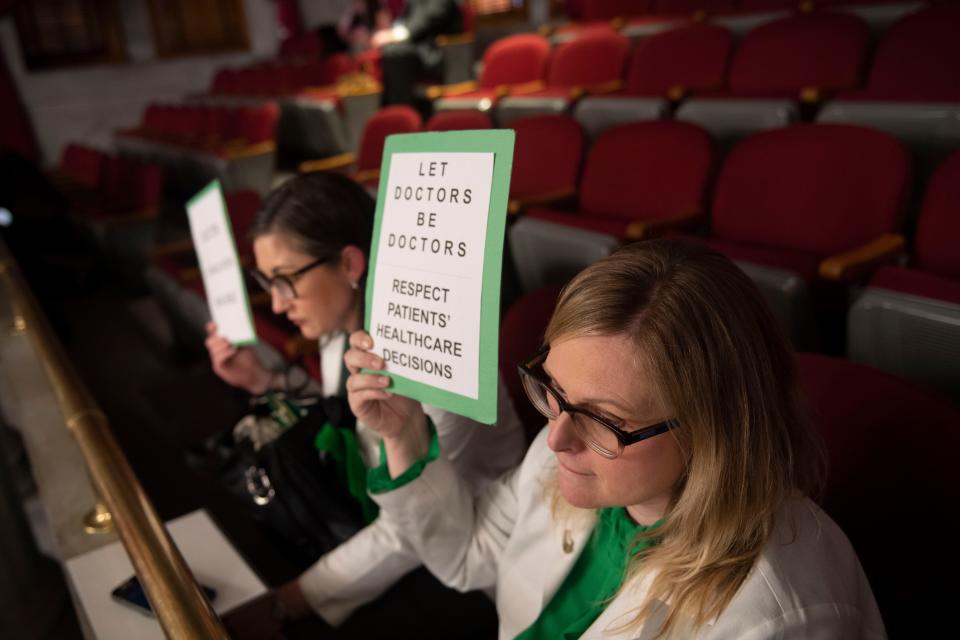Court decisions have consequences. The greatest are often unintended | Opinion
The Supreme Court, battered and bruised, has taken Americans through a crash course in the logic of American governing institutions in the past couple of years. It’s back to basics. People are even paying attention to state constitutions.
The choices facing the new nation were among a confederation with states in charge, a unitary national government or a federal government with shared power. The Founders, always fearful of concentrated power, chose the third option. They also instituted checks and balances among the legislative, executive and judicial branches.
Abortion rights and student loan debt decisions
On all fronts the debate continues: What’s the appropriate balance of power? Just look at two of the most controversial decisions of the last two years: the Dobbs v. Jackson Women's Health Organization decision that overturned Roe v. Wade and Biden v. Nebraska, which limited President Joe Biden’s ability to forgive student loan debt..

The debt decision was about the power of the executive vs. the legislative branch. One might choose sides over the short-range policy outcome. But the long-range implications for governing matter a lot more. Is it wise to give a president this much emergency power? The student loan program was created through the legislative process.
Debt forgiveness got our attention, but nothing like Dobbs. The Supreme Court’s decision that the U.S. Constitution didn’t contain a right to abortion reversed the decision justices had made in Roe back in 1973. That didn’t make abortion suddenly illegal. It returned the decision to the states. All state legislatures weren’t free to restrict abortion. Some state constitutions had their own right to privacy. State Supreme Court justices have the final word here.
The impact of Dobbs was immediate, clear and not going away any time soon. The fulfillment of the long-time Republican commitment to return abortion to the states, with the idea to virtually eliminate it as an option, is proving unpopular in an era when the shift of a few voters in a few states can alter state and national political landscapes.
The Republican majority in the Ohio legislature had wanted to ensure that voters would have a much harder time placing language in that state's constitution that would guarantee the right to an abortion. A few weeks ago Ohio voters overwhelmingly responded, “Not so fast.”
This continues a trend among voters in other red states. In 2022 Kansas and Kentucky voters also rejected changes to their constitutions that would have made explicit their constitutions didn’t provide a right to an abortion. The changes would almost certainly have led their legislatures to enact much stricter abortion laws.

It's hard to amend the Tennessee Constitution
Tennessee’s Constitution is among the most difficult in the nation to change. Amending it requires two legislative votes, the second a supermajority over two separate two-year sessions of the General Assembly. Then the amendment can be placed on the ballot, where a slight supermajority of voters must vote to approve it.
The Tennessee Supreme Court ruled back in 1992 that Tennessee had a right to privacy in its constitution. While the case at hand had to do with frozen embryos, it also limited the General Assembly’s ability to restrict abortion. In 2009, in anticipation of something like Dobbs, leaders of the General Assembly began the long march to present the voters with an amendment: “Nothing in this Constitution secures or protects a right to abortion or requires the funding of an abortion.”
Hear more Tennessee voices: Get the weekly opinion newsletter for insightful and thought-provoking columns.
With Roe still in effect, Tennessee voters barely approved the amendment, and the present highly restrictive laws soon followed. One wonders if Tennessee’s voters would vote the same today, with the outcome less speculative and more immediate.
Tennessee, Kansas, Kentucky and Ohio are majority Republican states, but on abortion, at least, they are not nearly as conservative as their representatives. This is also the case in key states such as Michigan and Wisconsin.
This issue, as recast through the Dobbs decision, may well be critical in determining the outcome of the 2024 elections at the statehouse as well as Congress and the White House.
William Lyons is Director of Policy Partnerships for the Howard H. Baker Jr. School of Public Policy and Public Affairs and Professor Emeritus of Political Science at the University of Tennessee. He also served as Chief Policy Officer for Knoxville Mayors Bill Haslam, Daniel Brown and Madeline Rogero.
The views and opinions expressed are those of the author and do not necessarily reflect the official policy or position of the Howard Baker Jr. Center for Public Policy or the University of Tennessee.
This article originally appeared on Knoxville News Sentinel: Opinion: Greatest court decisions often have unintended consequences.

